1686 Options at the end of life
This is Assisted Dying: A Doctor’s Story of Empowering Patients at the End of Life
by Stefanie Green
Toronto: Simon and Schuster Canada (Scribner), 2022
$24.99 / 9781668004784
Reviewed by Lee Reid
*
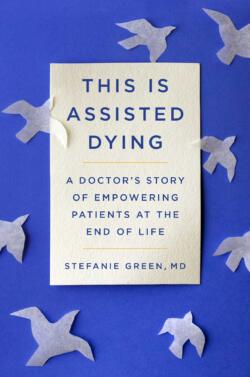 MAiD. Medical Assistance in Dying. I don’t see assisted dying as ending someone’s life; the underlying illness and suffering are doing that. I understand it more as facilitating someone’s wishes — Dr. Stefanie Green
MAiD. Medical Assistance in Dying. I don’t see assisted dying as ending someone’s life; the underlying illness and suffering are doing that. I understand it more as facilitating someone’s wishes — Dr. Stefanie Green
Euthanos is defined as a ‘good death.’ What and who determines a good day or a good way for you to die? Does the choice lie with the patient, or with the doctor? With religion, or with family? Is the choice determined by severity of human suffering, or by urgency with the prognosis ‘expected to die within six months’ (often associated with a diagnosis of terminal illness)? Does fate or nature make the decisions, or should the law decide? MAiD, called ‘assisted suicide’ or ‘voluntary euthanasia’ in the USA, and known in Canada as ‘Medical Assistance in Dying,’ has been working with these conundrums since the 1970s. In 2016, MAiD was legalised in Canada.
Author Stefanie Green, a Victoria maternity physician for twenty years, explores dying as part of a continuum-of-care through birth, living, aging, and death in her first book, This is Assisted Dying. It is a powerful and profound book. Beginning with her initial year of training in, and administering, MAiD, the book progresses in sections or chapters through legalities and riveting stories to poignant last words from patients. This is Assisted Dying outlines the history of MAiD, the training and protocols, and the reasons why people request MAiD.
Although the book begins with Stefanie Green’s initiation into MAiD in 2016, the stories and specialty education progress, interestingly, through the seasons of that landmark year. Roughly, the 25 chapters are divided into five chapters or sections per season. The overall effect implies that understanding of MAiD matures in cycles or chapters similar to the seasons depicted in the book: Beginnings (Part 1), Summer (Part 2), Fall Becoming Winter (Part 3), Spring (Part 4), Summer Again (Part 5).

Dr Stefanie Green explains the eligibility criteria in Canada, but also differing interpretations in other countries that provide MAiD such as the United States, or the Netherlands, Switzerland, Luxembourg, Belgium, or Columbia in South America. The book culminates with patients’ favorite last words, giving them the final voice before death. She comments, “I find the people I meet to be extraordinary. I am amazed at the expressions of love and support that I see. I start to wonder how I would wish my own death to look, and then I go home and hold my own family a little tighter” (p. 141).
Dr Green, or Stefanie as she prefers to be called, suggests that both birth and death be viewed as ‘delivery.’ Resonating with the concept of deliverance, we cycle through each life stage or season to a new chapter, often requiring midwifery or transition guides to help with delivery. In consultation with family and patient, the medical practitioner (doctor or nurse practitioner/or midwife or death doula or palliative professional) co-creates a plan for delivery of a baby with births or, if need be, a death plan for dying. In many cases, but not all, MAiD patients and family are profoundly grateful. One man’s last words at his assisted death were: “I realise this might sound ridiculous Dr. Green but I feel like you saved my life. Thank you for making this happen for me” (p. 169). A family tells her, “We’re befriending death. We’re holding it, we’re witnessing it, we’re taking it back into our own hands” (p. 244). And what does Stefanie learn? She told an interviewer that:
Among the many lessons … taught me, nothing sits more poignantly than this idea: a good life is the pattern for a good death. If you have lived well, served well, and enlivened others over the course of your life, your end will be flooded by the energy and presence of those you affected, and the stories of all you brought to the world in life (Interview in Macleans Magazine, November, 2016).
What, exactly, is MAiD in Canada? The simple explanation is that dying is assisted by a physician delivering a lethal injection to the patient. In some countries such as the USA a lethal drink is given to, and ingested by, the patient.
Contrasted with MAiD is the Hippocratic Oath which governs medical practice. With the Hippocratic Oath, medical care (including palliative care) aims to preserve and prolong life, to ‘do no harm;’ to safeguard the sanctity of life through to its natural conclusion. It is a given that the medical team will strive to protect or save patients’ lives and will support patients’ options to heal or to die naturally. Unless the patient provides written and witnessed advance directives that refuse medical interventions (such as ‘DNR, or ‘Do Not Resuscitate’), everyone must obey the Hippocratic mission. With MAiD, the intention is to end irremediable suffering if death is requested by the patient, and if death is ‘reasonably foreseeable’ or if the patient suffers from ‘advance decline,’ or is expected to die within six months. Readers might naturally question how MAiD could support quality of life, yet optimise a good death or ‘euthanos.’ How might they complement each other? Stefanie reflects that:
For me, the work is less about how people wish to die than it is about how they wish to live. What’s most important to you? Have you shared this with someone you love? While none of us is exempt from death, I have learned we can make the choice to embrace our life at any time, even its final moments (p. 255).
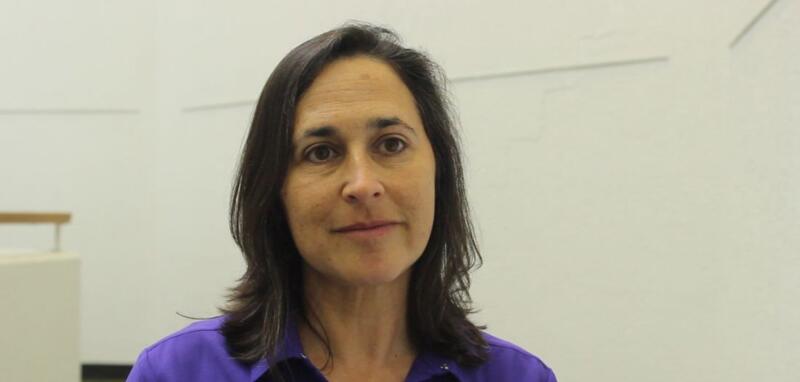
This is Assisted Dying is a candid book that presents a range of ethical perspectives and raises as many moral questions as it answers. Stefanie describes the process:
In a perfect world, assisted dying should never be an emergency. There should be a timely referral for information, a rigorous process to determine eligibility, room for consideration and exploration of all other options, and then, if required, careful planning of the procedure itself. There were many possible reasons why this wasn’t always so. Non-participating facilities and faith-based obstruction aside, inadequate awareness of assisted dying in the public and the health care community meant people sometimes came to me too late in their illness: too late for them to consider their options, too late for them to provide consent, too late for me to assess them before they died, too late for me to offer an alternative to their imminent, natural, often unnecessarily uncomfortable death. Low numbers of clinicians willing to be involved in assisted dying work meant limited access to assessors and providers of care, and yes, personal boundaries sometimes imposed limits on when those few clinicians were available. All of this meant that when I got inquiries like these, it was very hard for me to say no (pp. 229-230).
MAiD is free in Canada, but it is not without obstacles, cultural biases, and ambiguities at personal and political levels. Suicide, which many associate with MAiD, was considered illegal until 1972 when it was decriminalised in Canada. “But after a global AIDS epidemic, or perhaps due to a generation of aging baby boomers,” Stefanie writes, “there was a rise in the movement to improve the quality of life remaining instead of focusing on extending life at any cost — there was a growing interest in reclaiming death and dying through good palliative care and, in a number of jurisdictions around the world, through assisted dying” (p. 45). Legal interpretations are ponderous with terms such as ‘terminal diagnosis’ (where death is expected to occur within six months)’ or of a ‘reasonably foreseeable death’ (that might or might not occur within six months), or the specific meaning of ‘advanced decline.’
As of 2021, a foreseeable death does not uniformly mean a terminal diagnosis, although it does suggest that MAiD is warranted when there is irremediable decline toward death. Stefanie attempts to explain confusing nuances and subtleties. There are ethical conflicts involving religious beliefs that view MAiD as a form of suicide or moral transgression. Hospices and palliative care centres don’t necessarily condone MAiD or allow it to be facilitated at their premises. For many, their mandate is to provide quality care for life until death occurs naturally. MAiD may be viewed as beyond their paradigm and so patients who request MAiD may be forced to move to another premise. Moreover, there are spontaneous challenges, such as patients being too sedated or too late to receive MAiD. Family may refuse to allow MAiD for a loved one. And what about going ahead with MAiD if the patient loses capacity (such as speech or cognition) to provide consent, as happens with cases of dementia or other neurological conditions? Stefanie indicates that she would support advance directives for MAiD in some cases:
And for people like G … who have capacity and who meet eligibility requirements, for those who’ve been fully assessed and formally approved and have already set a date to die, I strongly believe there should be a special type of advance request, one that would allow them to proceed with MAiD even if they lose their capacity to provide the final consent (p. 174).
The obstacles do not override the heartfelt responses of families and patients described by Stefanie. Readers, let yourselves feel this book! Let it teach you about love and end-of-life care from the intimate living experience of the people within its pages. One nurse comments to Stefanie, “…I have to tell you that it was one of the most peaceful deaths I have ever seen. It was actually kind of beautiful” (p. 87).
Although the book begins with Stefanie’s career as a maternity doctor, readers will realise she represents much more than her roles. Her witnessing and presence support people to plan for their quality of living and their dying. Equanimity and compassion are essential when she faces angry family members and cautious colleagues who fear MAiD. She confronts the necessity for safety protocols to protect medical practitioners when assessing unstable clients in their homes. As a doctor, president and founder of CAMAP (Canadian Association of MAiD Assessors and Providers), and a frequent guest speaker and workshop facilitator, she is far more than her work on clinical faculty at UBC and UVic.

In her book, we learn that she is a smart and vulnerable woman whom readers will easily relate to. She has deep feelings, passions, fears, and she is aging; she loves renewing activities like yoga, kayaking, hiking, playing with her dog and walking on the beach. Her career passion is delivering babies, but the hours demand sacrifice of family or personal time. She is concerned about her elderly ailing mother who will require more help in an assisted living facility. She is aware that her mother’s situation will necessitate vulnerable conversations about advance planning in case of medical emergency, and decisions must be made in advance by her mother about interventions or resuscitation or quality-of-care if her health declines.
This is Assisted Dying marks a midlife passage that many readers might personally relate to. Now a middle-aged married mother, Stefanie realises that she needs more time shared with family and husband while the children are still home and while her elderly parent is alive. MAiD represents a radical shift in work and direction similar to what many people contend with at mid-life.
What is universal in her approach to birth and death is the credo of care that drives her work: “To cure sometimes, to relieve often, to comfort, always” (p. 51). When asked what her work was by a stranger, she replied simply, “I help people” (p. 255). So too can readers seek or discover guidance about their core values from this book, as they ask the burning question: ‘How do I wish to die?’ Which sparks the equally important question: ‘What quality of life do I want in my time remaining?’
Stefanie’s narrative style is detached, compassionate, and scientific where needed. She delivers clarity and education within values and protocols underscored by strong emotion. “… I’m willing to do this work when people follow the rules. And so far, patients and their families have been grateful” (p. 87). For readers affected personally by death, the book can trigger intense feelings or memories. You don’t have to agree with MAiD to appreciate the poignant and challenging human experiences described so vividly with many guidelines, personal reflections and stories about patients who engage with MAiD.
How do people apply for MAiD? How do families react and respond on the day of dying? What are the emotions surrounding MAiD? What last words are shared? What messages does a grieving family need to hear? Answers unfold like the seasons, with a rhythmic coherent narrative that eases some of the more difficult questions asked by people and doctors. For example: “Any suggestions for assessing a person who has full capacity but cannot speak? What have you done when family members are divided and angry about a patient’s decision to have an assisted death? Has anyone ever had children as young as six years old attend?” (p. 164).
Readers may learn much from Stefanie’s compassion and courage as she grapples with complex moral dilemmas. The work requires soul-searching and a strong skill set for ‘negative capability.’ ‘Negative capability’ is a poetry term defined as the ability to accept ‘uncertainties, mysteries, doubts, or the unknown,’ without defaulting to facts and reason for reassurance. Magnanimity of spirit and endurance characterise this skill.
The ethical choices and barriers become clearer when a patient says, “Keeping me alive isn’t doing me any favours” (p. 81), or when colleagues avoid helping to co-assess patients for MAiD eligibility, “No, not something I want to get mixed up in” (p. 83). One patient who had to euthanize their ailing pet, protests: “Is it okay that we are more compassionate toward our pets than we are to our human family of loved ones?” (p. 47).
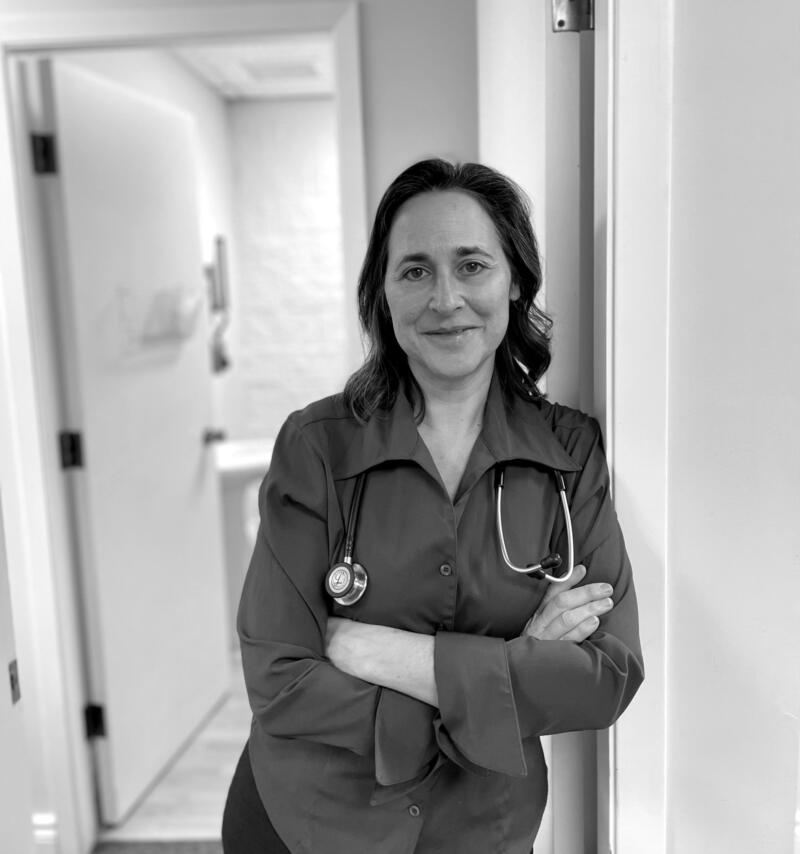
The first chapter, Beginnings, marks Stefanie’s arrival in Amsterdam in 2016 to interview MAiD practitioners and their medical teams at a convention for the ‘World Federation of Right to Die Societies.’ This section reviews the history of MAiD, which was legalised in Canada that year. Stefanie asks, “How do you learn what you need to know?” (p. 90). She admits, “I suspected it was a curious experience for all of us, finding our way into this new field of care, a bit like searching for a light switch in the dark after entering an unfamiliar room” (p. 88). In Amsterdam, she learns that for patients, “the most commonly mentioned end-of-life concerns were a loss of autonomy, the loss of ability to engage in activities that brought meaning or joy to life, and the loss of a sense of dignity. It seemed that for many patients, psychological was as bad or even worse as physical symptoms…” (p. 57).
Subsequent seasons and chapters explore Stefanie’s questions about vulnerability in her professional role, and the areas of self-care she must be vigilant about to avert burnout (p. 227). The last chapters and epilogue of the book describe legal changes to MAiD including a global update, and changes in the US.
Stefanie outlines the role of CAMAP (Canadian Association of MAiD Assessors and Providers) in publishing research on MAiD. CAMAP provides information to the Canadian House of Commons and Senate when ‘lawmakers were debating proposed legislation’ (p. 264). At the end or back of the book, she provides a list of resources from government sites, patient advocacy groups, or books and articles, including ‘Children’s Grief Resources.’
This is Assisted Dying includes graphs which reveal the increase in MAiD deaths reported from 2016-2017 and lists the main ‘irremediable’ conditions that required MAiD from 2019-2020. Cancer predominates, unsurprisingly, at close to 70 percent of MAiD deaths, followed by cardiovascular, pulmonary, neurological, ‘other conditions’, multiple conditions and ‘other organ failure’ (p. 272). What readers might find especially intriguing in the graphs were the % of MAiD deaths compared to total deaths in 2020, with Canada (2.5 percent ) and the Netherlands (4 percent) hosting the highest rates. Notably, Vancouver Island (7 percent) and BC (4 percent ) reported the highest rates of MAiD deaths compared to overall mortality in Canada (p. 272). And of the patients who qualified for MAiD, most fit the demographic of white, well-educated, affluent, averaging age 75. Missing here is the BIPOC demographic who seem underrepresented. Stefanie questions the reasons and the need for more research. Does this demographic suggest that the intersection of race, income, gender and/or culture make a difference when it comes to considering or rejecting MAiD? Also excluded from MAiD are mature minors who may suffer from a terminal disease but are considered too young to make the decision. Currently, legislature is examining the ethics of MAID for patients with dementia, mental illness, or other conditions that may prohibit them from giving an informed and rational consent.

MAiD in the USA. Since 2016, MAiD has expanded in the USA. Some aspects of MAiD were already provided in 2016 by several states such as Oregon, Washington, Vermont, Montana and California. By 2021, variations of MAiD were legislated by Colorado, New Jersey, Hawaii, Maine, New Mexico and the District of Colombia, allowing 25 percent of the US population potential access to MAiD (p. 260). By 2021, other states were considering legislation. Although differing in emphasis, all the states now require MAiD to be overseen by a physician (in some cases by advanced practice registered nurses or APRNs) and all states require the patient to be terminally ill with a prognosis of six months or less to live (p. 261). Currently, aspects of MAiD have been accepted in Germany, Australia, and Spain, and it is under debate in the UK.
In Canada, Bill C7 legislated changes in 2021. These changes included:
… removing the ten-day waiting period for those whose death is reasonably foreseeable, and the addition of extra safeguards for those whose death is not foreseeable — a minimum ninety-day assessment period, the mandated input of a clinician with expertise in the condition causing the person’s suffering; and the required information about, offer of, and serious consideration of a trial of all reasonable and available means to reduce suffering, including mental health and disability support services, counselling services, and palliative care (p. 259).
At the end of her book, Stefanie muses about the rich relationships she feels honoured to witness as a MAiD practitioner:
They made me question if I was lazily accepting some superficial relationships in my life when what I wanted (needed?) was something more meaningful. They inspired me to deepen the connections with some of the people around me. Why are we so afraid to really know each other, to let ourselves be known? I wanted to be more open, to receive and to look for more rapport, and that meant being more available for my mother’s physical needs and her emotional struggles. Here was an opportunity not to run away but to purposely dig in and connect (p. 237).
The ‘last words’ of patients complete the book with a vulnerable voice: “See you on the other side… I love you all… Now please… Thank you all for being here…. Fire!… I’m ready now…Bless you” (pp. 265-266).
Here are the criteria for MAiD in Canada, copied from Green’s website. In accordance with Federal Bill C-7, passed in March 2021,
- You must be an ADULT (this is defined as being 18 years of age or older)
- You must be CANADIAN. Actually the law is that you must be eligible to receive government-funded health care services, so residents, landed immigrants, refugees, and Canadian citizens all qualify. At this time, non-Canadians are not able to access MAiD in Canada, even if paying privately.
- You must be suffering from a GRIEVOUS and IRREMEDIABLE condition. This is further defined as a serious illness, disease or disability that puts you in an advanced state of decline that cannot be reversed, and that causes intolerable suffering that cannot be relieved by any means acceptable to you.
- Your request for MAiD must be made VOLUNTARILY, free from pressure from anyone else.
- You must be CAPABLE of making your own health care decisions — this means your request for MAiD can only happen after you have a clear understanding of your medical condition and have been informed of other treatment options. You must be capable of making this decision both at the time of the request and be able to give consent at the time of the procedure itself, except in certain, limited circumstances.
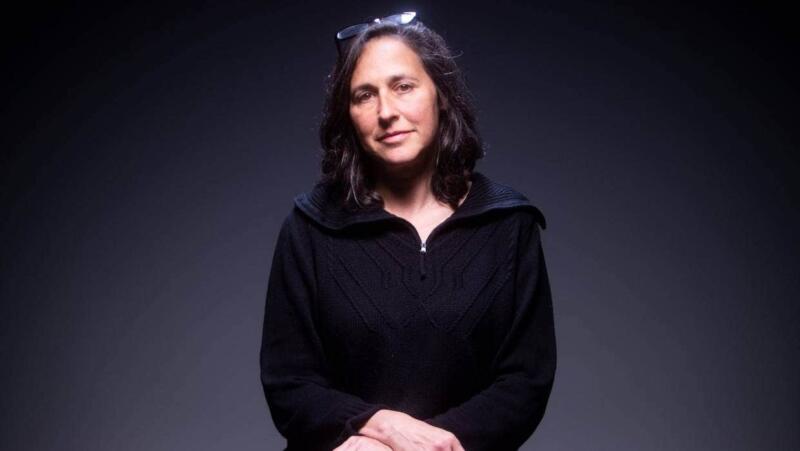
Stefanie Green. Chris McKeen photo courtesy stuff.co.nz
*

A retired clinician formerly with Nelson Mental Health, Lee Reid has written four books about BC rural and coastal communities. Her stories centre around the values and health care needs of BC seniors. Lee has also written stories about intergenerational education, rural home support care services, trauma, and dementia. Her books are: From a Coastal Kitchen (Hancock House, 1980); Growing Home: The Legacy of Kootenay Elders (Nelson, 2016), reviewed by Duff Sutherland; and Growing Together: Conversations with Seniors and Youth (Nelson, 2018), reviewed by Luanne Armstrong. In 2021, she self-published a fourth book, Stories of Mount Saint Francis Hospital: 1950-2005, which illustrates a legacy of compassionate nursing care at an historic extended care hospital in Nelson. Visit her website here. Editor’s note: Lee Reid has recently reviewed books by Leslie A. Davidson, Phyllis Dyson, Joan Neehall, Janie Brown, June Hutton & Tony Wanless, Megan J. Davies & Rachel Barken for The British Columbia Review. In 2018 she contributed a popular memoir of growing up in the south of England and North Saanich, The Spider Hunters.
*
The British Columbia Review
Publisher and Editor: Richard Mackie
Formerly The Ormsby Review, The British Columbia Review is an on-line book review and journal service for BC writers and readers. The Advisory Board consists of Jean Barman, Wade Davis, Robin Fisher, Barry Gough, Hugh Johnston, Kathy Mezei, Patricia Roy, Maria Tippett, and Graeme Wynn. Provincial Government Patron (since September 2018): Creative BC. Honorary Patron: Yosef Wosk. Scholarly Patron: SFU Graduate Liberal Studies.
“Only connect.” – E.M. Forster
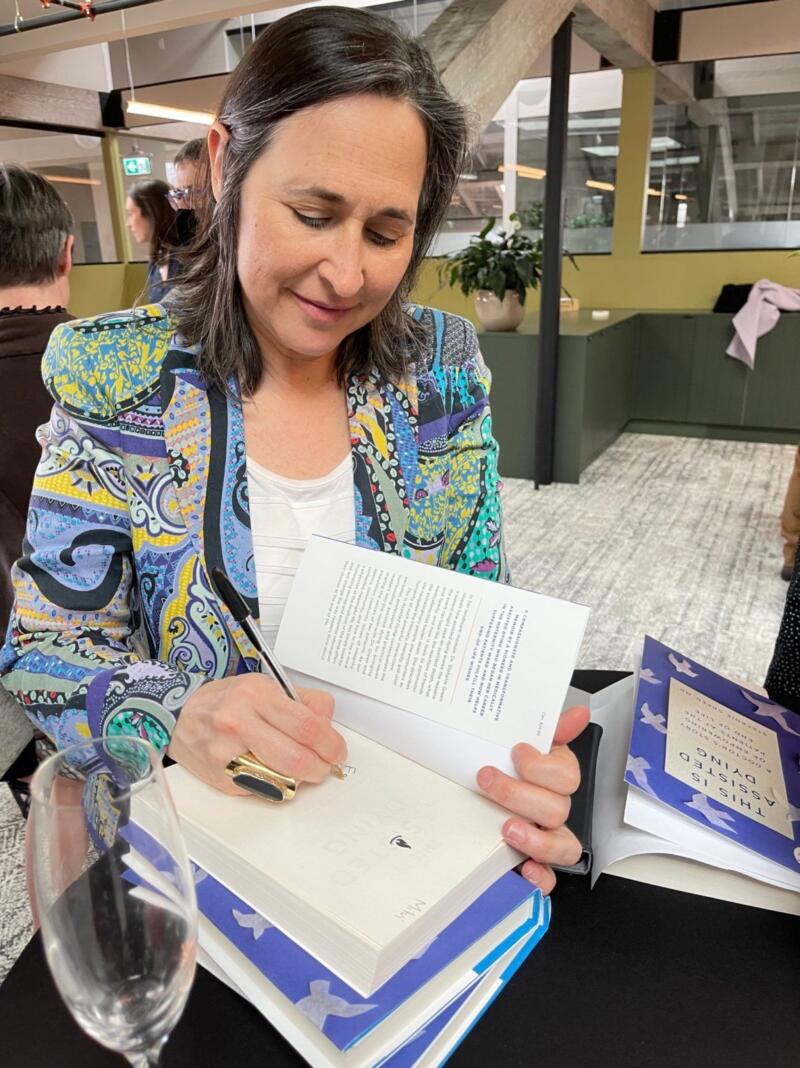
3 comments on “1686 Options at the end of life”